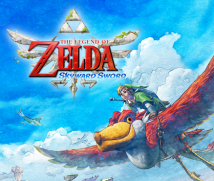4. Mobilising Experience and Inspiration
I don’t generally think of deserts as places with a lot of change, but it sounds as if no one will get bored in this one.
I agree. Even from the looks of it, the desert has enough changes to not be outdone by the other stages, so it’s a stage with challenging content.
It does appear that you included a number of tricks there. I saw a little of it and it seemed that way to me. Why do you think this area turned out to have such dense content?
When I first saw the transformation experiments that Fujibayashi-san, Takemura-san and others were doing, I was amazed.
You mean that experiment Fujibayashi-san mentioned earlier in which you fired an arrow and everything turned green.
Yes. And because of the transformation, broken carts and robots would work again. When I saw that, I really wanted to play it. I was thrilled, thinking, “I could do some cool stuff with this!” Above all, I thought from the bottom of my heart, “I don’t want this to go to waste!”
You didn’t want it to end with the experiments.
That’s right. This overlaps what Takemura-san said earlier, but when making the first stage, we thought up all kinds of ideas and actually tried them out, but we just couldn’t put them in the area I worked on. Usually, you would just let it go, but I didn’t want the ideas that arose from the transformation system to go to waste, so I went around advertising them to others, saying, “This is really cool. Can you use it?”
Huh? You went around peddling your ideas? (laughs)
Yes. (laughs) But not just me. The other planners and people who made enemies were doing the same thing.
Oh! I heard in the last session of “Iwata Asks” that Iwata Asks: The Legend of Zelda: Skyward Sword. No one wanted their ideas to go to waste, and actually implementing them led to this game’s density.
I believe that’s true.
What do you think, Fujino-san?
This is a continuation of what Kitagawa-san just said about asking people if they would use his ideas, but when I joined the team, quite a lot of objects were coming together.
You joined development partway through.
Yes. I looked at each one, and while they weren’t complete, I sifted through them, thinking, “I could use this...” and “I can’t use that...” and turned them over in my head.
Oh, that’s the same method as mentioned earlier. (laughs) You gathered together all these incomplete bits and pieces and thought them over, like, “This would polish up nicely...” and “It would be great to hook this and that together.”
You got it. (laughs)
Perhaps the way you have used these materials had to be logical once again. (laughs)
That’s hitting the nail on the head! Fujino-san is logical about everything. To put it another way, he’s like a chef who pulls all these ingredients out of the refrigerator and mixes them together for wonderful content like a delicious meal! (laughs)
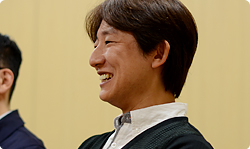
Understood. Takemura-san, why do you think this game is so dense?
We had loads of material, so we decided to structure the desert into three areas. That’s bigger than the other areas, but Fujibayashi-san had a clear policy regarding the direction he wanted the game to go, so we were able to divide up the areas and invest them with our three individual personalities. I think that’s why we were able to make each stage dense and unique.
The desert stage truly is rich in variety.
The desert stage turned out to have such rich variety and density because you injected your individual personalities even as you hungrily adopted ideas that others had come up with.
Yes.
I’d like to end by having each of you who worked on the desert stage say something to the fans who are excitedly waiting for The Legend of Zelda: Skyward Sword. Since you made the first area, let’s start with you, Kitagawa-san.
Okay. As mentioned earlier, we made a past and present for each single area, so please experience them both. They hold a lot of puzzles, and some are a little challenging, but I hope you’ll go back and forth between the two times and do your best to solve them.
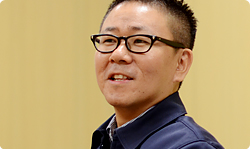
Fujino-san? You made the second area.
Like he said, the desert is quite challenging. I think some people will sometimes think, “This is hard!” but it isn’t made in a way that feels unreasonable.
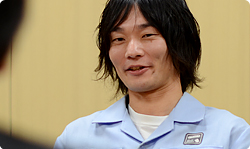
Because it’s a logical dungeon. (laughs)
That’s right. (laughs) We aimed for a satisfying balance in the game field and dungeon, so I hope people will play to the end and experience the mystery of a desert becoming a sea and the fun of searching for the wandering ship.
Okay. And the third area... Takemura-san?
In the desert, you can enjoy both the past and present via the transformation system, but the other stages as well have content that makes you aware of the past, and that connects to the desert.
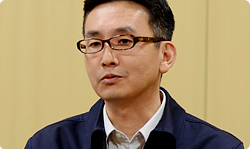
It isn’t restricted to the desert.
That’s right. So discover those elements and enjoy them!
When I hear that, I get the feeling that when you play, you can enjoy the game immensely as you think, “Perhaps this is connected to that...” And now from the director. Fujibayashi-san?
There’s a building important to the story in the desert, and within the game as a whole, the desert is the scene of a big turning point within the story. And it cranks things up a notch in terms of swordplay, item use, and puzzle-solving, so I hope players will mobilise their experience and inspiration. And ultimately, you can witness a major climax here, so I hope you will look forward to it and try to clear it.
I see. An impressive moment lies just ahead.
Yes. (laughs)
I’m looking forward to it. Thank you.
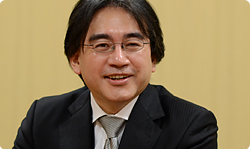
Thank you.
